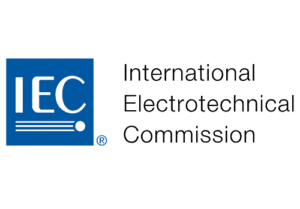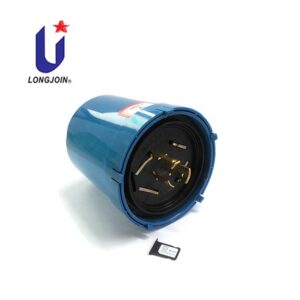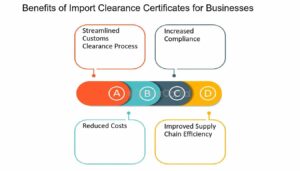9 Factors Impacting the Photocell Cost
Introduction
Outdoor lighting plays a crucial role in enhancing both the aesthetic appeal and safety of residential, commercial, and public spaces. Besides, it helps save energy and makes the process of turning the lights on and off hassle free. Photocells, also known as photoelectric cells or light sensors, are integral components of outdoor lighting systems. They automate the operation of lights by detecting ambient light levels and triggering the illumination when it becomes dark and turning off the lights when there is enough sunlight.
The cost of photocells in outdoor lights is influenced by a multitude of factors, ranging from technological specifications to market dynamics. In this exploration, we will delve into the key determinants that contribute to the pricing of photocells in outdoor lighting solutions and are these factors worth your money?
1. Technology and Features:
Photocells are available in various technologies. The choice of technology can significantly impact the cost. Silicon-based photocells, for instance, are more expensive due to their enhanced sensitivity and durability along with improved functionality.
Additional features such as adjustable sensitivity, delay timers, and compatibility with smart lighting systems contribute to the overall cost. Advanced technologies and features often translate into a higher price tag. However, choosing the latest technology is worth your investment as it helps you save more in electricity bill and also reduces the need to periodically fix the problems in photocells.
1. Technology and Features:
Photocells are available in various technologies. The choice of technology can significantly impact the cost. Silicon-based photocells, for instance, are more expensive due to their enhanced sensitivity and durability along with improved functionality.
Additional features such as adjustable sensitivity, delay timers, and compatibility with smart lighting systems contribute to the overall cost. Advanced technologies and features often translate into a higher price tag. However, choosing the latest technology is worth your investment as it helps you save more in electricity bill and also reduces the need to periodically fix the problems in photocells.
2. Quality and Durability:
The quality of materials used in the manufacturing of photocells affects their durability and performance. High-quality components and robust construction, like the one provided by our Long Join series contribute to a longer lifespan but also increase the production cost. However, you must not compromise on the quality of components, or else, it will cause you more hassle rather than increasing your convenience.
Weather resistance is crucial for outdoor lighting applications. Photocells designed to withstand harsh environmental conditions, including extreme temperatures, humidity, and UV exposure, are typically more expensive.
3. Sensitivity and Accuracy:
The sensitivity of a photocell determines its ability to accurately detect changes in ambient light levels. Photocells with higher sensitivity may be more costly, especially if they are designed to operate in low-light conditions or respond rapidly to changes in illumination.
Accuracy in light detection is essential for reliable performance. Advanced calibration and precision in sensing light levels can contribute to a higher cost but also ensure optimal functionality. So it’s worth your money.
4. Energy Efficiency:

Energy-efficient photocells that minimize power consumption during operation are in high demand. Photocells with energy-saving features, such as the ability to dim lights based on ambient conditions, may command a premium due to their positive impact on overall energy efficiency. Their higher cost is balanced by the role they play in lowering electricity bills.
5. Installation and Integration:
The ease of installation and integration with existing lighting systems can influence the cost of photocells. Models that are designed for simple DIY installation may be more affordable, while those requiring professional installation or integration with complex lighting networks may incur additional costs thus making them more costly.
6. Certifications and Compliance:
Photocells designed for outdoor use must adhere to safety and regulatory standards. Obtaining certifications and ensuring compliance with industry regulations adds to the production costs. Consequently, photocells that meet or exceed these standards may be priced higher to cover the expenses associated with testing and certification processes. This additional certification cost is added to overall price of photocells thus making them more expensive.
7. Market Demand and Supply:
Like any other product, the basic economic principles of supply and demand play a role in determining the cost of photocells. Higher demand for specific features or technologies may drive up prices, especially if the supply cannot keep pace.
Conversely, advancements in manufacturing processes, economies of scale, and increased competition can contribute to cost reductions, making photocells more affordable for consumers.
8. Brand Reputation and Support:

Established brands with a reputation for quality and reliability may price their photocells higher due to the perceived value and customer trust associated with the brand.
Additionally, brands that offer excellent customer support, warranties, and after-sales services may justify a higher price point based on the added value and peace of mind they provide to customers.
9. Economic Factors:
Macroeconomic factors such as inflation, currency exchange rates, and global economic conditions can influence the cost of raw materials and manufacturing processes. Fluctuations in these economic variables may impact the overall production cost of photocells, subsequently affecting their market price.
9. Conclusion
The cost of photocells in outdoor lights is a multifaceted interplay of technological sophistication, quality, energy efficiency, market dynamics, and brand factors. As technology advances and market demands evolve, the landscape of photocell pricing is likely to continue changing. Understanding these factors empowers consumers and industry professionals to make informed decisions when selecting outdoor lighting solutions that meet their specific needs and budget constraints.






